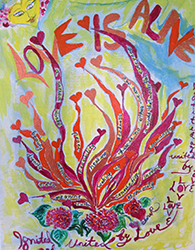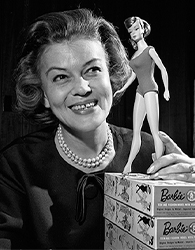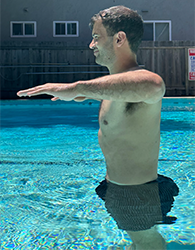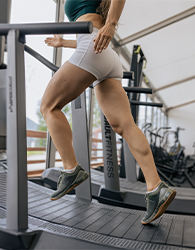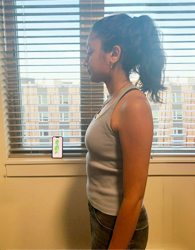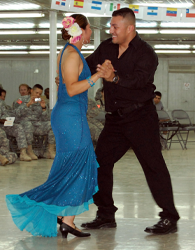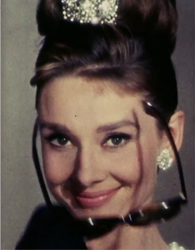In January and February this year I took the Gokhale Method Elements course, which consists of 18 brief (13 minute) but potent lessons. I would like to share my experience of the Gokhale Method with you in this blog post.
My goals were to find out how to sit, stand, and walk well, so that I don’t overstress the scoliotic parts of my back. I was also in search of more comfortable and beneficial sleeping positions. I felt I needed guidance to help me develop a better sense of my body posture and alignment. To be able to do a one-on-one course online made this possible for me.
It was only when I saw the difference between my “Before” and “After” pictures that I realized just how much change it was possible to make to my posture in such a relatively short period.
Get Updates on the Latest Blog Posts
This summer, with blockbuster success, Barbie is front and center! And yes, I did see the movie. I usually use dolls to talk about our physical characteristics, but their intended function is to teach emotional and social skills such as friendship, parenting, and play. Barbie the movie certainly emphasizes this aspect of the iconic doll in no subtle way!
This blog post looks to dolls for some postural lessons, and also some emotional ones. Research such as a 2017 New Zealand study increasingly shows that posture connects with both our physical and emotional stance, and in our company we have increasingly come to embrace the deep relationship between posture and emotional health. So, over to Barbie, Wonder Woman, and friends. . .
The Question
Can I get Gokhale-fit in 9 weeks (for a long overseas trip) via the online Gokhale Elements course?
The DreamThe trip of a lifetime is looming: 3 months in France in Spring 2023—something
August is peak holiday time across the northern hemisphere, and many of us who live here will find ourselves poolside, or even better, in it!
Being in water has the natural advantage of lifting weight off the joints while providing gentle resistance training. Aching backs or knees can find relief from compression in the natural buoyancy that water provides. This has made pool exercises a popular prescription with physical therapists over many years, especially for post-operative or post-injury rehabilitation.
On land, to relieve pain and compression, people usually use elaborate measures like inversion tables, traction units, or going to outer space! In the Gokhale Method we provide decompression for the lower back relatively simply with the Stretchsit® Cushion or the nubs on our Gokhale™Pain-Free Chair. But stepping into water is the simplest of all, giving you freedom of movement and the ability to strengthen yourself simultaneously.
My mother developed Parkinson’s Disease (PD) over 22 years ago. My mom’s brother passed away from PD, and another relative on the maternal side also suffered with it. I also have a more distant “uncle” who is in the early stages of PD, who I visit. This particular disease has loomed large in my family and my life for over two decades, but many of its challenges and what helps will apply to those living with other diseases and their caregivers. In this blog post I would like to share how the Gokhale Method has helped my mom, my family, and me.
During the Victorian Era, a British engineer, William Cubitt, invented the treadmill as a means of harnessing hard labor in prisons and penal colonies. It was also used unproductively, purely as a punitive measure. Despite this sordid history, the treadmill has become a highly beneficial and enjoyable device within the context of a contemporary lifestyle.
The sedentary nature of modern life in the industrialized world leaves most of us with less than the ideal amount of physical activity. In 1968 the importance of aerobic exercise was popularized by the book Aerobics by Kenneth H. Cooper. Inspired by this book, the first electric consumer treadmill was developed by another American by the name of William Edward Staub.
The phrase “it takes a village to raise a child” is thought to originate from an ancient African proverb.
As I have grown into being a parent, uncle, and beyond, I have realized that this quote extends to any age. I have directly experienced this with my own posture journey—my own family “village” has helped me and others dear to me find a near pain-free life through the Gokhale Method®.
My Story: Annoying Body Pains Were Affecting My Fun In Life
In my late thirties, a stream of inflammatory pains permeated my body, including back pain, shoulder pain, knee pain, and—worst of all—plantar fasciitis in my foot. While these weren't absolutely crippling pains, they were painful enough to keep me from enjoying life as I gave up my favorite hobbies—tennis, golf, and playing the piano.
I visited numerous renowned doctors in California. They genuinely tried to help, but nothing resolved my pain. So I began searching for other solutions.
The Key Find: Esther’s book, 8 Steps to a Pain-Free Back
In 2012 I bought Esther’s book, 8 Steps to a Pain-Free Back, as it was highly recommended on Amazon.
Regular readers and our students will know that I am a great fan of dance—it is a fun, social, and mood-elevating way to get fitter and master healthy posture.
Dance and the importance of length in the spine
The Gokhale Method® focuses on restoring the spine to its natural length, strength, and shape in all positions and activities. In vigorous activities like dance, with higher impact and distortions like twists, side bends, flexions, and extensions, the inner corset technique becomes especially important.
Vision and headaches
We know that challenges with our vision can cause headaches. Squinting in bright light or straining the eyes to bring hazy text into focus can easily result in strain or pain in the eyes, temples, top of the head, or elsewhere.
What is less widely acknowledged is that wearing prescription glasses can also cause headaches. An overlooked cause of headaches—and other pains too—is the poor posture we often adopt when wearing glasses. In this post I will be looking at the posture traps to avoid with eyewear—and how to turn wearing glasses to your postural advantage.

